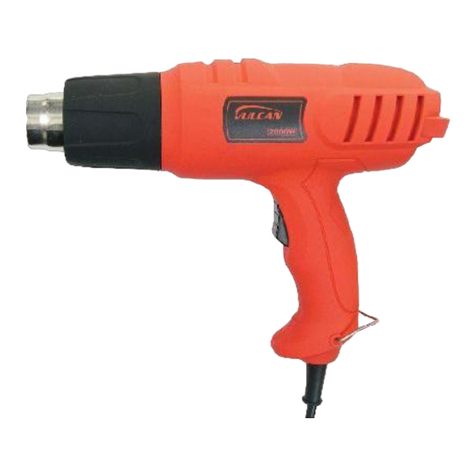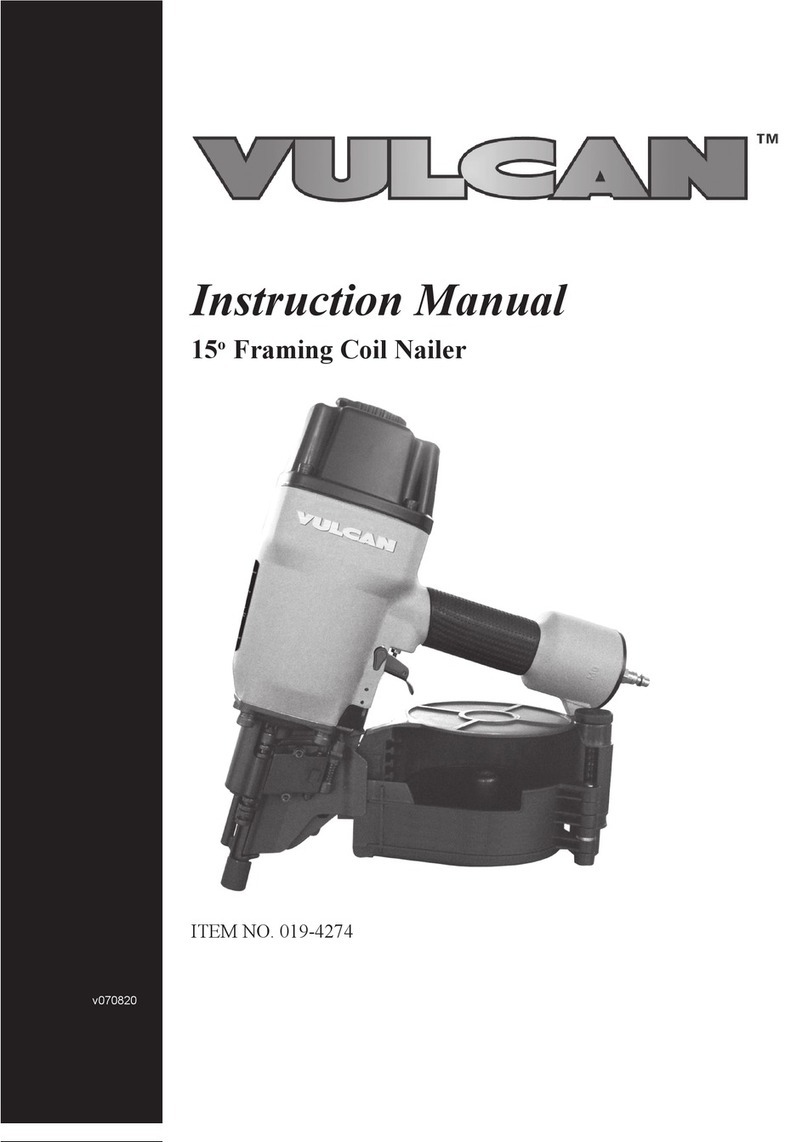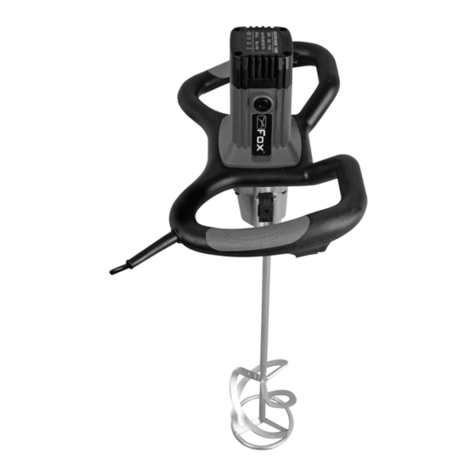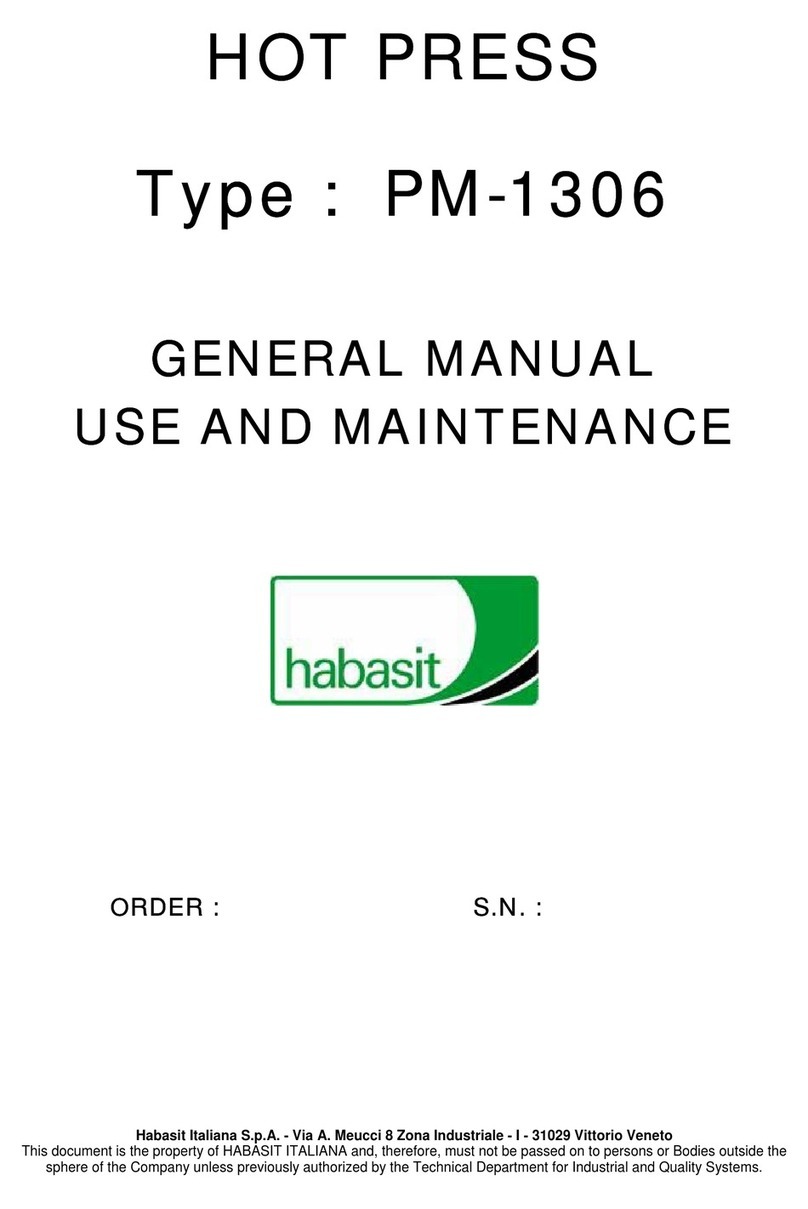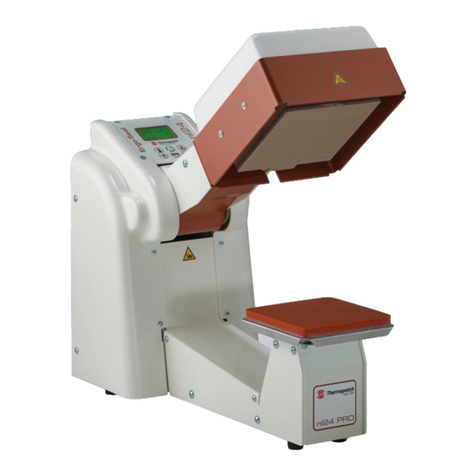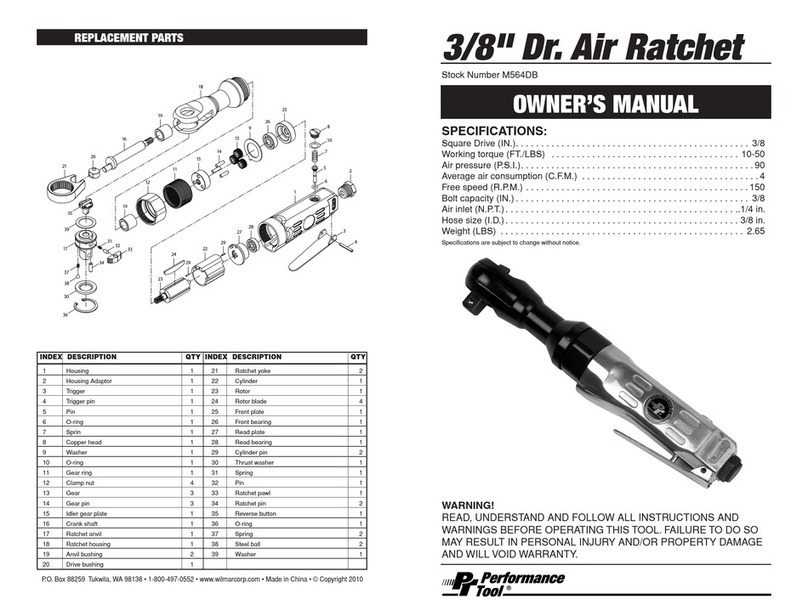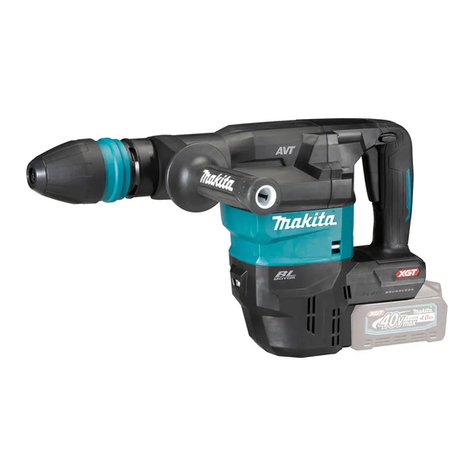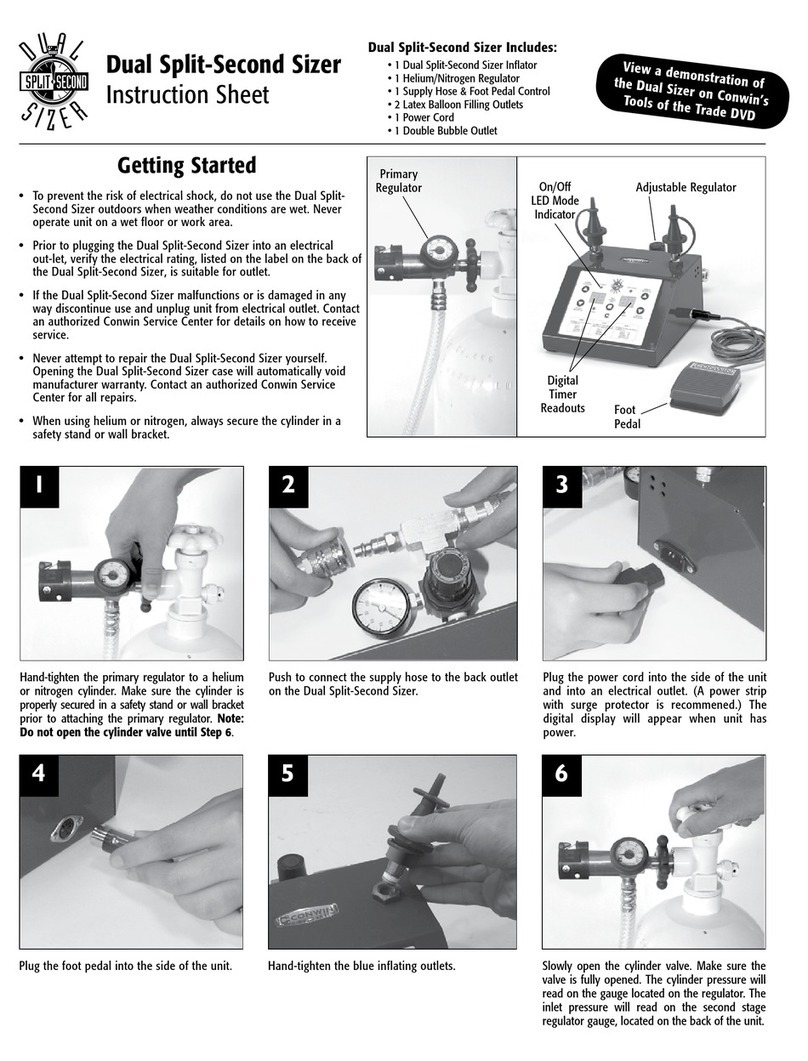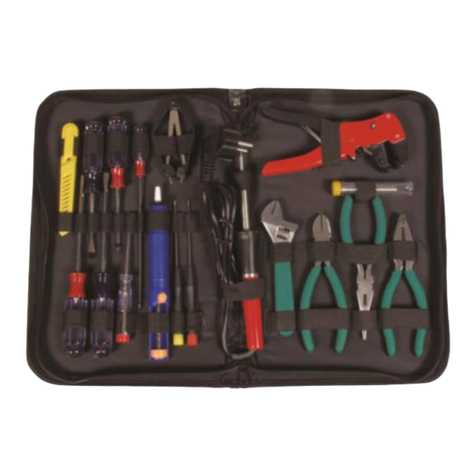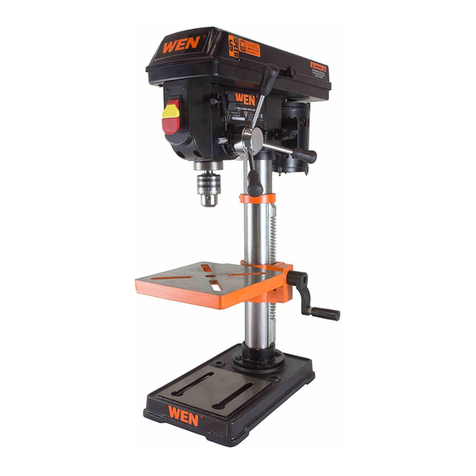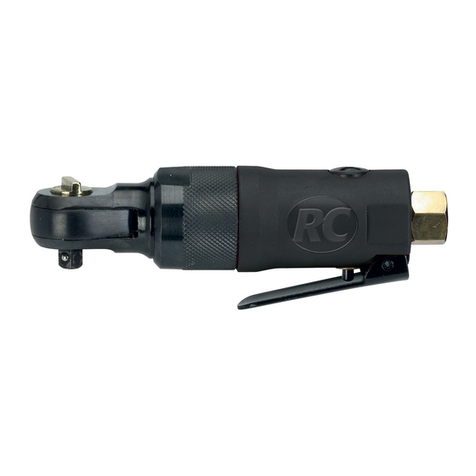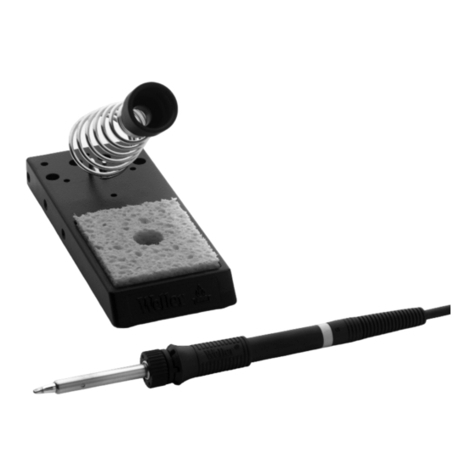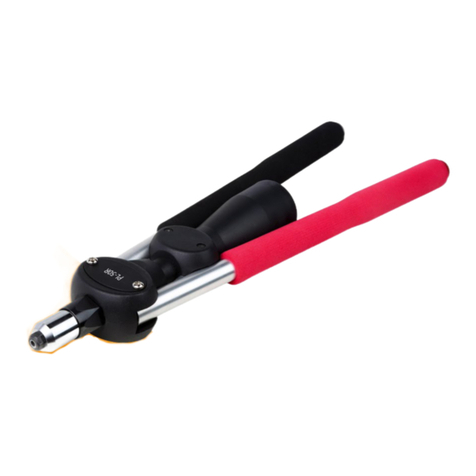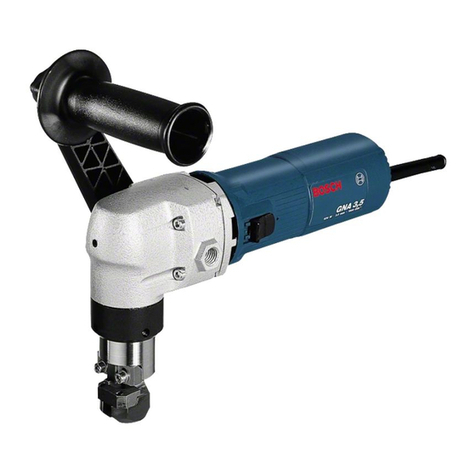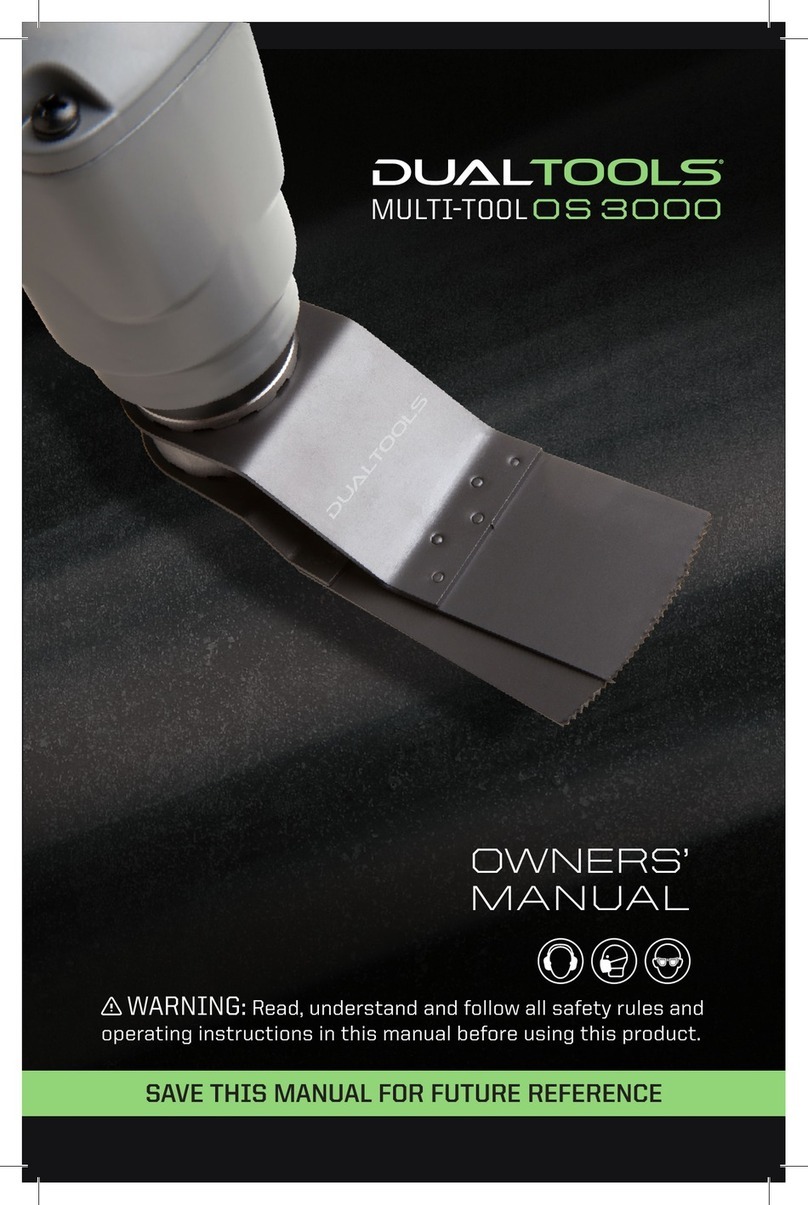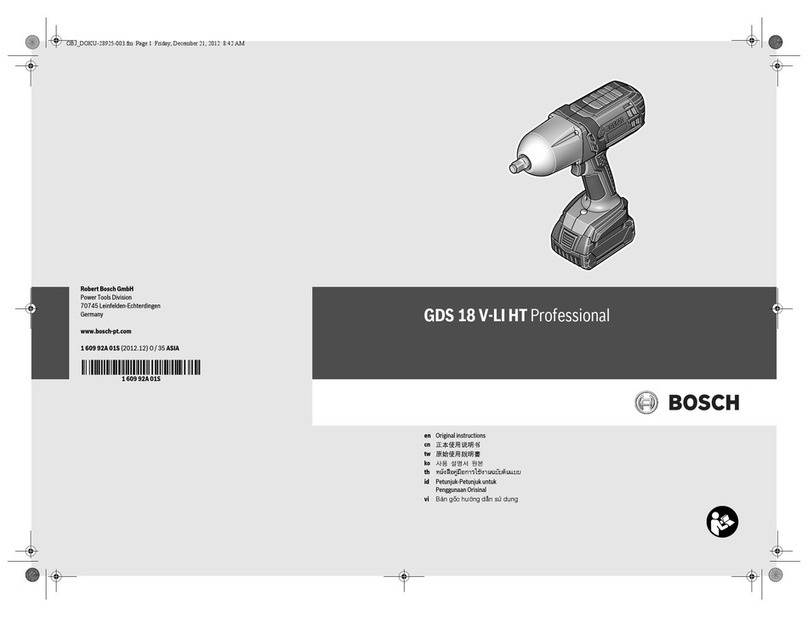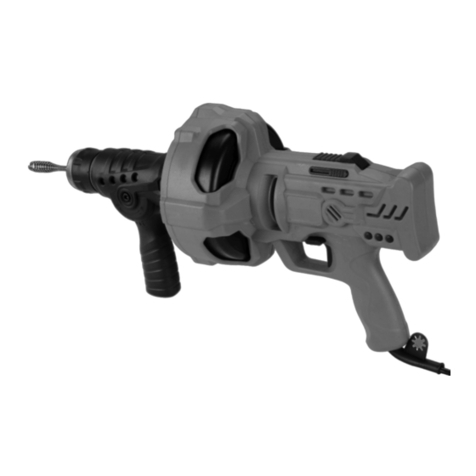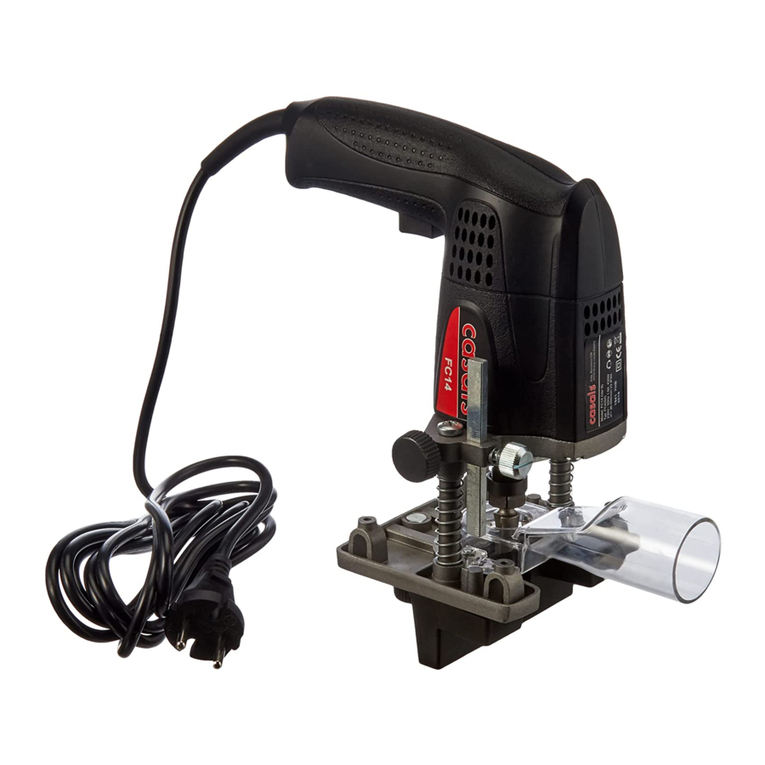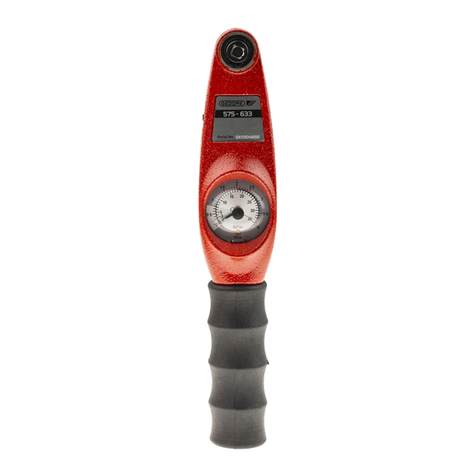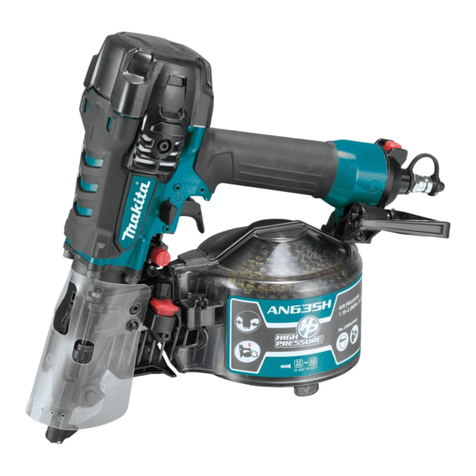Vulcan-Hart EWP 250-1200 User manual

Table of Contents
Cover –Title Sheet
Instructor Resume
Coarse Objectives
Training Outline
Operation and Maintenance Training for Vulcan Industries EWP Washing Press
Section 1 - Safety
Section 2 –Operations
Section 3 –Electrical Sequence of Operation
Section 4 –Maintenance
All training will consist of both Classroom and hands-on training.
Twelve (12) sets of this outline will be provided for training purposes
No additional audio/visual training aids are required for this training.

Training Manual
Project: Beaver Channel Pump Station and Related
Modifications and Contract C- New WWTP
Project Location: Clinton, IA
Equipment:
1 –Screening Washing Press Model EWP 250-1200
Equipment Tag No.: 10SCS-WSP01
Contract Specification Section: 11092
Related Equipment:
1 - Mensch Crawler Screen Model No. FT48 CI “Severe Duty”
(2) Shaftless Screw Conveyor Model KSF- 240
Contractor:
Gridor Construction, Inc.
4025 S. 30th St.
Clinton, IA 52732
Engineer:
HDR Engineering Inc.
1860 Boyson Road
Hiawatha, IA 52233
Manufacturer:
Vulcan Industries, Inc.
212 S. Kirlin St.
Missouri Valley, IA 51555
712-642-2755, FAX 712-642-4256
Manufacturer’s Representative:
Doonan Environmental
809 W. Spring St.
Eldridge, IA 52748
Vulcan Job No. 10100
Prepared by: Mark Hoffman
mark@vulcanindustries.com

VULCAN INDUSTRIES, INC.
Submittal Documents for: Clinton WWTP
Clinton, IA
Vulcan Ind. Job No.: 10010
Contractor: Gridor Construction
Specification Section References: 11092
SERVICETECHNICIANRESUMES
Vulcan Industries, Inc.
212 S. Kirlin St., Missouri Valley, IA. 51555
Email: www.Vulcanindustries.com
Phone 712.642.2755 • Fax 712.642.4256

2
VULCAN INDUSTRIES, INC.
WATER / WASTEWATER TREATMENT EQUIPMENT
212 S. KIRLIN ST. MISSOURI VALLEY, IA. 51555
(712) 642-2755 or fax (712) 642-4256
Email www.vulcanindustries.com
SERVICE REPRESENTATIVE QUALIFICATIONS
Carlton Griffin
Mr. Griffin has been employed full time by Vulcan Industries for fifteen years as a service
representative. He has been trained in the proper equipment start-up and operating
procedures as required by the field service employee manual as approved and signed by
the President of Vulcan Industries, as well as other Service Personnel.
Carl assisted other service representatives on several service and training operations before
becoming a full time serviceman. Prior to being employed by Vulcan, Carl worked as a
service technician in the food packing equipment industry.
He has performed start-up services and operator training on approximately 300 bar screens
and other wastewater plant equipment across the United States and abroad. Mr. Griffin has
a vast background in the operation and maintenance of plant equipment, as well as
electrical control and hydraulic equipment.
Mike Sharp
Mr. Sharp likewise has been employed full time by Vulcan Industries for approximately six
years as a service representative. He too, has been trained in the proper equipment start-
up and operating procedures as required by the field service employee manual as approved
and signed by the President of Vulcan Industries, as well as other Service Personnel.
Mike also assisted other service representatives on several service and training operations
before becoming a full time serviceman. Prior to being employed by Vulcan, Mike was a
service technician and manager for several companies involved in the manufacturing field.
Mike has an extensive mechanical background as well as vast experience in electrical
control, pneumatics, hydraulics and customer service.
While not performing field services, the technicians assist in the manufacturing of equipment
and electrical controls related to the Wastewater Treatment Industry.
Mike has performed start-up services and operator training on approximately 150 stair
screens, washing presses and related equipment, and is particularly specialized in the start-
up and optimization of rotary drum thickeners.
Kenny Athay
Mr. Athay has been employed full time by Vulcan Industries for approximately three years as
a service representative. He was trained in the proper equipment start-up and operating
procedures by the other Service Personnel.

3
Kenny assisted other service representatives on several service and training operations
before becoming a full time serviceman. Prior to being employed by Vulcan, Kenny worked
for many years as a technician in the HVAC and electrical industry. He has extensive
knowledge in the areas of electrical, electronics, mechanical and pneumatic equipment.
While not performing start-up services, Kenny assists in the manufacturing of equipment
and electrical controls related to the Wastewater Treatment Industry.
He has performed start-up services and operator training on approximately 100 wastewater
screens, presses and related plant equipment across the United States.
Jay Kirk
Mr. Kirk has been employed full time by Vulcan Industries for approximately sixteen years,
with 8 serving in the capacity of service technician. He is currently employed in our
electrical controls design department. He too, has been trained in the proper equipment
start-up and operating procedures as required by the field service employee manual as
approved and signed by the President of Vulcan Industries, as well as other Service
Personnel.
Jay assists other service representatives in troubleshooting, adjustments and optimizing the
operation of equipment . Prior to being employed by Vulcan, Jay was a service shop
foreman for a major agriculture distributor. Jay has an extensive mechanical background
and while working with John Deere, Jay received specialized, extensive training in electrical
control, pneumatics, hydraulics and customer service.
Jay has performed start-up services and operator training on approximately 140 bar screens
and other wastewater plant equipment across the United States and abroad.
Mr. Kirk has a vast background in the operation, maintenance and electrical control of the
supplied equipment

Coarse Objectives
Vulcan Model EWP Washing Press
Identify, describe and/or perform the following:
1. Safety Hazards
2. Functional Description of Equipment
3. Technical Description and Component Identification
4. Equipment Operation
5. Troubleshooting
6. Maintenance and Lubrication
7. Maintenance Demonstration
The intent of this training is to provide all plant personnel (Operations, Maintenance and
Electrical) with the general knowledge to operate and maintain the equipment. Personnel will
understand the functional and technical operation of the equipment, be able to troubleshoot,
maintain and repair the equipment and adhere to recommended safety procedures. Following is
a basic outline of the content of this training session:
Operation and Maintenance Training Outline
1. Safety
a. Biohazard warning
b. Electrical Hazards
Mechanical Hazards
2. Operations
a. Functional description
b. Owners responsibilities
c. Operational sequence of equipment
d. Operational procedures of equipment
3. Electrical Sequence of Operation
a. Normal start-up sequence
b. Electrical sequence of operation

c. Electrical equipment device functions
4. Maintenance
a. Lubrication schedule
b. Daily maintenance schedule
c. Weekly maintenance schedule
d. Monthly maintenance schedule
e. Half-yearly maintenance schedule
f. Maintenance and repair of individual components

Section 1
General Safety
Instructions
1General Safety Instructions
1.1 Operator’s Responsibilities
This machine was designed and built to operate within all applicable safety guidelines.
In practice, however, this safety can only be achieved if all the necessary measures are
taken. It is the responsibility of the owner and/or operator to ensure that these measures are
taken and to monitor their performance.
The operator must ensure that:
The machine is used only as directed in this manual.
The machine is in good working condition and the safety devices are checked regularly
for their operability.
The required personal safety gear for operating, maintenance and repair is available and
is used.
The operating instructions are available in legible condition and in complete form.
Only adequately qualified and authorized personnel operate, maintain and repair the
machine.
All the safety and warning signs attached to the machine are in place and remain legible.
All doors, panels, covers, and guards are closed or secured in place.
1.2 Safety Measures
A. Keep Information Available
Keep these operating instructions in an easily accessible location. Ensure that everyone
working on the machine can access the operating instructions at all times.
Keep all safety signs and instruction plates on the machine in legible condition. Immediately
replace signs that have become damaged or unreadable.
B. Biohazardous materials
When operating the machine, especially when performing maintenance and upkeep, it is
imperative that you comply with applicable instructions and guidelines on safety, occupational
medicine and hygiene. The medium processed by the machine falls under the category of;
“Biologically Hazardous Material”!

Section 1
General Safety
Instructions
C. Before Turning the Machine on
Familiarize yourself with:
The operating and control elements of the machine.
Machine equipment.
The mode of operation of the machine.
The immediate surroundings of the machine.
The safety devices on the machine.
Emergency measures.
Before the machine is turned on, perform the following:
Check and ensure that all safety devices are attached and functioning.
Check the machine for visible damage. Immediately rectify defects or report them to
supervising personnel. Operate the machine only when it is in good working condition.
Ensure that only authorized personnel remain the in the area of the machine and no one
might be injured when the machine is activated.
Caution: Automatic Equipment! When the machine is
activated, it can run in automatic mode. It can start automatically
at any time.
D. During Normal Operation
Do not remove or deactivate any safety device while the machine is running.
Do not operate the machine with guards, doors, panels or covers removed.
E. During Maintenance
Perform the maintenance work prescribed in the operating instructions –adjustment,
cleaning, lubrication, upkeep and inspection –within the suggested maintenance schedule.
Take note of special requirements for individual components in these operating instructions.
Before performing maintenance work:
Disconnect the power supply. Follow all Lock-Out Tag-Out procedures in place for the
worksite. Note that control panels may have more than one source of power.
Ensure that all parts of the drive have cooled down to room temperature.
Ensure that appropriate hoisting gear and load suspension devices are available when
large machine parts have to be replaced.
Bar access to the work area of the machine and ensure that no unauthorized people
remain in it.
Replace machine parts that are not in good working condition
Use only genuine replacement parts from the manufacturer.
Ensure that suitable collection containers are available for all substances that are
hazardous to groundwater (oils, coolants, etc.).
After maintenance work is completed and before switching on the machine:
Check that all bolted joints previously loosened are securely fastened.
Check whether all safeguards and covers previously removed are properly installed.

Section 1
General Safety
Instructions
Ensure that all tools, materials and other equipment used have been removed from the
work area.
Clean the work area and remove liquids that might have spilled.
Ensure that all safety devices of the machine are functioning properly.
F. Working on Electrical Equipment
Only trained electricians should perform work on electrical equipment of the machine.
Regularly check electrical equipment:
Reattach loose connections.
Immediately replace damaged wires or cables.
Always keep the control panel and all electrical supply units closed. Access is allowed only
by authorized personnel.
Never clean electrical equipment with water or similar liquids.
G. Environmental Protection
When performing work on the machine follow the protocol for waste prevention and proper
recycling or waste disposal.
Ensure that hazardous substances such as grease, oils, coolants, solvent-containing
cleaning fluids, etc. are collected and disposed of in a safe manor and as prescribed by
environmental laws.
H. Equipment Modifications
For safety reasons, do not perform any unauthorized modifications to the machine. This also
applies to welding work on load-bearing parts.
Vulcan Industries, Inc. must approve all modifications in writing.
Use only genuine replacement parts from the manufacturer. Parts manufactured from a third-
party do not conform to the manufacturers design standards.
The use of third-party parts and special equipment on the machine could result in
catastrophic failures and void the warranty.
1.3 Requirements for Operating Personnel
Warning: All operating and maintenance personnel
must read and understand these operating instructions before
operating and/or performing maintenance to this machine.
A. Operating Personnel
Only personnel who are trained, instructed and authorized to operate the machine may do so.

Section 1
General Safety
Instructions
These personnel must be familiar with the operating instructions.
In addition, the following qualifications are needed for the following activities:
Only electricians may perform work on electrical equipment.
Only trained personnel may perform maintenance, upkeep and repair work.
1.4 Other Dangers
A. Risk of Injury
Do not impede the operating sequence of the machine. Injury from the moving components
can occur. Lock-out the machine before performing any kind of inspection or maintenance
activities.
Warning: Do not reach into automatic equipment
without first shutting down the machine! The machinery can
start at any time.
B. Build-up of Hazardous Gasses
Because of the nature of the treatment process, hazardous gasses may form and lead to a
deadly atmosphere.
Always take appropriate precautions when operating and/or maintaining equipment in a
classified area.
Warning: There is risk of explosion or detonation.

Section 1
General Safety
Instructions
1.5 Safety Symbols
The following are pictures and an explanation of all the safety stickers that are used on
Vulcan equipment. Some of these may or may not pertain to your particular machine.
A spreader bar must be used when
lifting this machine.
Contractor, make sure that the seal off
fitting is potted before you close out
the job.
Be careful of moving parts when
working on the machine. Use proper
Lock-out procedures.
This part of the machine is not meant
to be used as a step. Injury to persons
or damage to machinery can result.

Section 1
General Safety
Instructions
Grease point for maintenance
reference.
Grease point for maintenance
reference.
Watch for an open pit.
Equipment in Automatic mode may
start if sensors are triggered. Make
sure the machine is properly locked-
out

Section 1
General Safety
Instructions
Do not operate the machine with
covers removed.
Take care in not getting caught in the
exposed screw or other moving parts.

Section 2
Operating
2.1. Functional Description
Valve Operations
1. Injects washwater into the 3. Introduces washwater into
washing zone through the top of the washing zone.
hollow shaft spiral.
2. Sprays water over 4. Flushes dewatering zone and
screenings as they enter drain pan.
the inlet hopper.
Screened material is delivered to the inlet zone of the wash press either by a spiral
conveyor or by direct discharge from a screen. The spiral moves the material from the
inlet zone into the washing zone. In the inlet zone the spiral acts as a conveying spiral. In
the wash zone the spiral acts as a press to squeeze the organics in the screenings so
they can be washed out. To optimize the process the spiral moves forward and backward
(reverses) several times during the cleaning cycle.
During the washing process water is injected into the screened material from the hollow
shaft of the spiral. The wash water dissolves and removes solvable organic material.
Water injected from the top of the washing zone washes dissolved organics out the
bottom through the drain slots. The drain slots are formed from wedge wire. The self-
relieving design prevents organics from plugging the slots. Additionally, a hydrophobic
brush cleans the slots whenever the spiral is rotating.
The washed material is continuously displaced by additional screened material. Washed
material is moved forward into the press and dewatering zone. Because of the robust
construction of the wash press, a high level of compaction and dewatering is achieved.

Section 2
Operating
The cleaned material can be conveyed directly to a container through the discharge pipe.
2.2 Technical Description
The wash press is designed as a spiral press to wash organic dissolvable materials out of
coarse and fine screened material. The spiral press then dewaters, compresses and
transports the material.
The wash press is designed for the treatment of screenings from municipal waste water
treatment plants. It can be used for other processes; however, Vulcan Industries Inc. must
approve the application in order to guarantee the performance of the equipment.
The main components of the wash press are:
The wash press housing is fabricated from stainless steel. A wedge wire drain section
with 2mm spacings is welded to the bottom of the press frame. The housing and the
wedge wire section are strong enough to withstand the high pressure generated by the
spiral. The discharge piping may be bolted directly to the flange at the output end.
The drained wash and press water is collected in a tank at the bottom of the press. The
tank is fitted with a drain outlet. The drain water should be brought back to the process
flow of the plant. The collecting tank is fitted with quick releasing latches, and can be
opened and removed for clean out.
The cover to the press and de-watering zone is also removable for inspection and
cleaning.

Section 2
Operating
A gear motor drives the spiral. The drive shaft to the spiral passes through a sealed thrust
bearing box, which takes all of the thrust from the pressing operation, and prevents
pressed liquid from entering the gear box.
2.3 Operating Procedure
2.3.1 Normal Operation
A. Manual Mode
The wash press can be operated manually or in automatic mode. In manual mode,
the screw will run in forward or reverse, depending on the position of the selector
switch on the local control panel. The forward condition is maintained. The reverse
condition is momentary, due to the spring return in the switch. The machine should
never be run for long periods in reverse. Doing so could force debris past the screw,
into the bearing housing.
B. Automatic Mode
In automatic mode the wash press cycle is initiated by a signal from the main control
panel. The wash press will complete a series of functions associated with the
washing and compacting of the screenings. The wash press will then either stop in
the absence of a start signal, or start another cycle in the presence of a start signal,
from the main control panel. While in automatic mode, a cycle can be started any
time by pressing the “initiate” pushbutton at the local control panel. This function is
convenient for evaluating press performance, wash water delivery, timing sequences,
and drain conditions.
2.3.2 System Regulating and Control Procedures
Wash water to each of four solenoids is regulated by manual ball valves located
ahead of the solenoid valves. The valves should normally be run “full open”, unless
the water pressure and flow are very high. The ball valves can be used to throttle the
flow to each valve.
The machine is protected from operational damage by a current sensing relay
incorporated into the main control panel. The relay measures motor current. If the
current reaches the pre-set level, the machine will stop, reverse, stop, and then
continue with the cycle. This sequence will repeat for three cycles. If the obstruction is
not cleared in three cycles, the wash press will stop and an overtorque alarm will be
initiated.
The timing of the wash cycle is mostly automatic and controlled by the internal PLC at
the main control panel. The functions of the cycle that are adjustable are noted in the
“Electrical Sequence of Operation”. The adjustable functions are accessed through
the operator interface on the front of the main control panel.
2.3.4 Normal Shut-down Procedures
For short periods of shut-down (less than one day) simply turn all switches off. Note
that the equipment feeding the press should also be shut down. The water supply to
the valve manifold may or may not be turned off.

Section 2
Operating
For long periods of shut-down, the discharge pipe should be purged of screenings,
which could harden in the pipe and cause a blockage when the equipment is re-
started. The pipe can be purged by running ice through the press until all the
screenings are purged. The ice in the pipe will melt and go down the drain.
2.3.5 Seasonal Operating Instructions
The wash press should never be subjected to freezing conditions. Freezing will cause
failure of valves and rupture of water lines. If the wash press is to be operated at near
or below freezing temperatures, all water lines and discharge piping must be heat
traced and insulated.
2.3.6 Emergency Start-up
The wash press can be run manually in forward or reverse by:
At main control panel, set disconnect “on”
At main control panel, set press control power “on”
At local control panel, switch for-off-rev to “off”
At local control panel, switch hand-off-auto to “hand”
At local control panel, pull out emergency stop switch
At local control panel, switch for-off-rev to “for” for forward, or “rev” for reverse.
The wash press can be run through a complete cycle by:
At main control panel, set disconnect “on”
At main control panel, set control power “on”
At local control panel, switch for-off-rev to “off”
At local control panel, switch hand-off-auto to “auto”
At local control panel, pull out emergency stop switch
At local control panel, press the “initiate” pushbutton to initiate a cycle.
2.3.7 Emergency Stop / Restart
Activate the E-Stop during an emergency situation to immediately stop the machine
from operating. Restart the machine by:
Pulling the E-Stop button fully towards you.
Restart the machine in the proper operating mode.

Section 3
Electrical
Functions
Sequence of Operation
1. After the Washing Press has been properly installed/adjusted, motor rotation
checked and all control panel devices (timer(s), overload(s), current sensing relay,
etc.) have been set, automatic operation may proceed. Make sure all personnel are
clear of the equipment. Pull out the Emergency Stop push button and place the
Hand-Off-Auto selector switch in the "Auto" position for the automatic sequencing to
be enabled.
2. Then go to the main control panel and open the door. Then turn on the circuit
breaker for the drive motor. Close the door and place the main disconnect in the
“On” position. Then turn the Control Power selector switch to the "On" position. The
white Control Power indicator light should be on at this time.
3. The Washing Press will be started by a totalized cycle count from each bar screen
that is transmitted over an Ethernet connection. When the preset/adjustable count is
reached and the conveyor has stopped, the automatic Batch Mode of operation of
the Washing Press will be initiated. The run pilot light will be illuminated while the
screw is running. The screw will run, alternately, in the forward and reverse
directions. The solenoid valves will be cycled "On" and "Off" as required by the
program within the PLC. When the washing part of the program is complete, the
material will be discharged and the dewatering zone and drain pan are flushed.
Pressing the Initiate push button located on the local control station will also start a
Batch Mode of operation. If a high upstream level condition is detected, the Mensch
Screen, Conveyor and Wash Press will run continuously until the high level condition
is no longer present. See Stormwater mode description in “Shaft and Valve
Sequencing” for high level operation of the Washing Press.
4. The Washing Press is protected from overtorque by the current sensing relay (CSR)
in line 9. Should the Washing Press encounter an obstacle the drive motor current
will increase. Once this increase equals the preset of CSR, the CSR contact in line 8
will close. At this point the screw will stop, reverse momentarily then run forward
again in an attempt to clear the cause of the overtorque condition. After this occurs 3
times the automatic operation will cease and the press overtorque relay (CR2) and
the overtorque indicator will be lit. Turn the Hand-Off-Auto selector switch to the
"Off" position. Then push the Reset push button to reset. Place the Hand-Off-Auto
selector switch in the "Hand" position and use the Forward-Off-Reverse selector
switch to reverse the screw. Once lockout procedures are met, the jam may be
cleared and the controls again set for automatic operation.

Section 3
Electrical
Functions
Shaft/Valve Sequencing
Batch Mode
Step 1. Screw forward, valves 1 & 2 (hollow shaft & hopper) energized. (xx
seconds)
Step 2. Screw stopped, valves 1 & 3 (hollow shaft & washing zone) energized.
(xx seconds)**
Step 3. Screw reverse, valves 1 & 3 (hollow shaft & washing zone) energized.
(xx seconds)
Step 4. Screw stopped, valve 3 (washing zone) energized. (xx seconds)**
Step 5. Screw forward, valve 1 (hollow shaft) energized. (xx seconds)
Steps 2 thru 5 will be repeated for a minimum of 4 cycles. The number of cycles that
these steps are repeated can be changed by the operator interface on the front of
the control panel. If the discharge from the Washing Press appears to require further
“washing” the number of wash cycles should be increased as required.
Step 6. Screw forward, valve 1 (hollow shaft) energized. (xx seconds)
Step 7. Screw forward, no valves energized. (xx seconds)
Step 8. Screw stopped, valve 4 (flush dewatering zone & drain pan) energized.
(xx seconds)**
(** Time setting is operator adjustable via the operator interface)
Stormwater Mode (High Channel)
Screw runs in the forward direction, reversing for 3 seconds of every 45 seconds of
forward run time. The solenoid valves are energized continuously during high channel
operation.
This manual suits for next models
1
Table of contents
Other Vulcan-Hart Power Tools manuals


